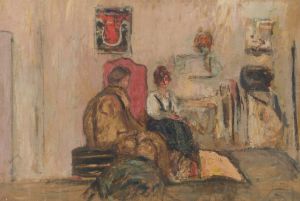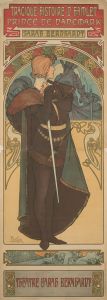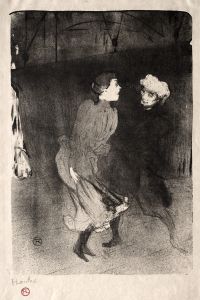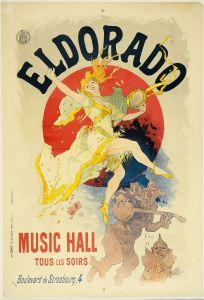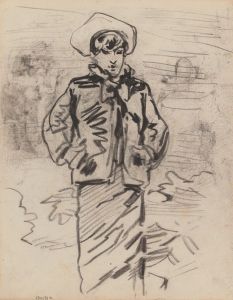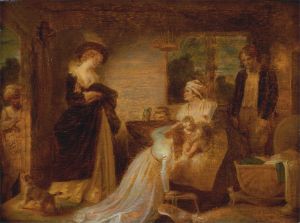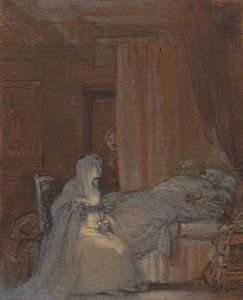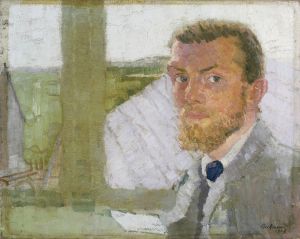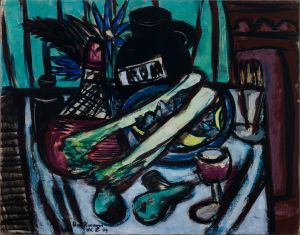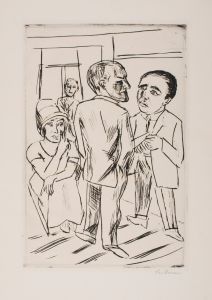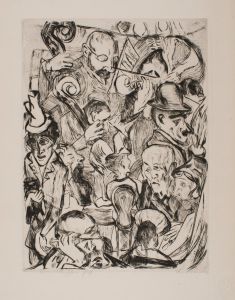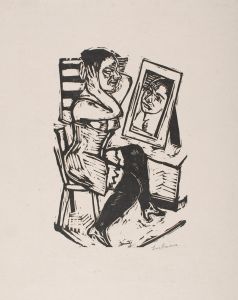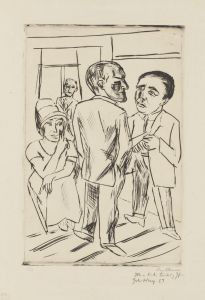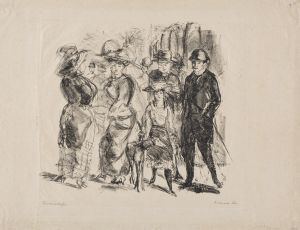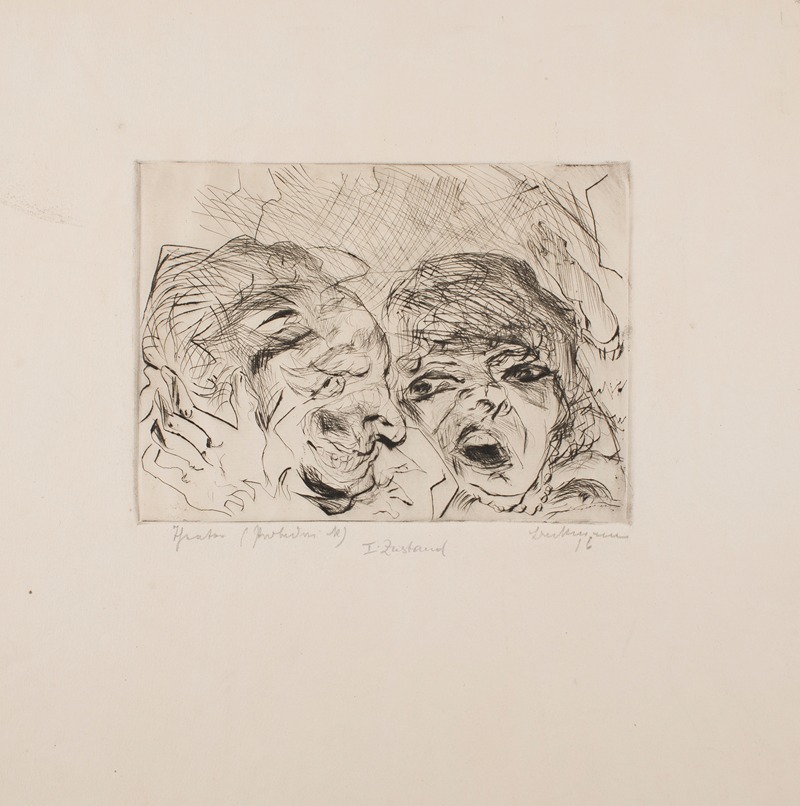
Theater
A hand-painted replica of Max Beckmann’s masterpiece Theater, meticulously crafted by professional artists to capture the true essence of the original. Each piece is created with museum-quality canvas and rare mineral pigments, carefully painted by experienced artists with delicate brushstrokes and rich, layered colors to perfectly recreate the texture of the original artwork. Unlike machine-printed reproductions, this hand-painted version brings the painting to life, infused with the artist’s emotions and skill in every stroke. Whether for personal collection or home decoration, it instantly elevates the artistic atmosphere of any space.
Max Beckmann's painting "Theater" is an exemplary work that showcases the artist's distinctive style and thematic preoccupations. Beckmann, a German painter, is renowned for his contributions to the New Objectivity movement, which emerged in the Weimar Republic during the 1920s as a reaction against expressionism. His works often explore complex themes of human existence, identity, and the social dynamics of his time.
"Theater," completed in 1924, is a significant piece within Beckmann's oeuvre. The painting captures the bustling and multifaceted world of the theater, a subject that Beckmann revisited throughout his career. The theater, for Beckmann, was a microcosm of society, a place where the boundaries between reality and illusion blur, and where human emotions and interactions are laid bare.
In "Theater," Beckmann employs his characteristic bold lines and vivid colors to create a dynamic composition. The painting is populated with a variety of figures, each engaged in different activities, reflecting the diverse roles and personas found within a theatrical setting. The figures are rendered with a sense of volume and solidity, yet they are also stylized, emphasizing the performative aspect of their existence.
Beckmann's use of space in "Theater" is particularly noteworthy. The composition is tightly packed, with figures overlapping and interacting in a confined space, creating a sense of claustrophobia and intensity. This spatial arrangement mirrors the chaotic and often unpredictable nature of life, a recurring theme in Beckmann's work.
The painting also reflects Beckmann's interest in the interplay between light and shadow. The dramatic lighting enhances the theatricality of the scene, casting certain figures into sharp relief while others recede into the background. This use of chiaroscuro not only adds depth to the composition but also underscores the dualities present in the theater: light and dark, seen and unseen, reality and illusion.
"Theater" can be seen as a reflection of the social and political climate of the Weimar Republic, a period marked by instability and change. The painting captures the sense of uncertainty and disillusionment that pervaded German society at the time, as well as the search for meaning and identity in a rapidly changing world.
Max Beckmann's "Theater" remains a powerful testament to the artist's ability to convey complex human emotions and societal themes through his art. The painting is housed in the Museum of Modern Art in New York, where it continues to be appreciated for its artistic and historical significance. Beckmann's work, including "Theater," continues to resonate with audiences today, offering insights into the human condition and the enduring power of art to reflect and critique society.





